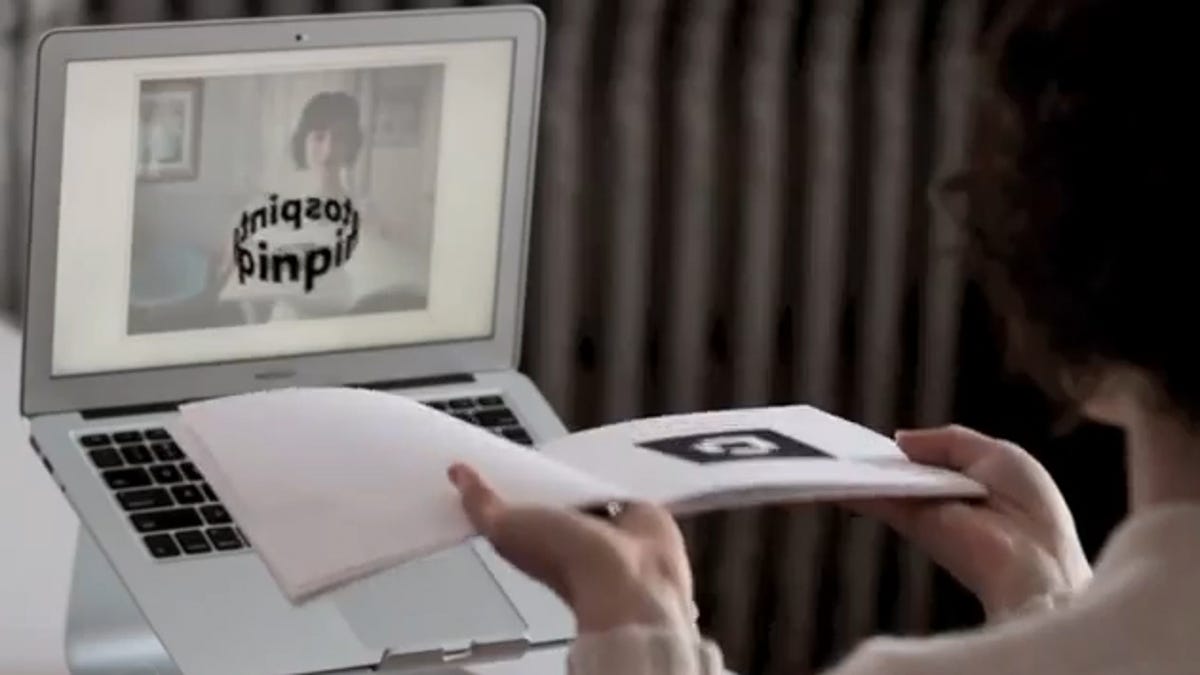Digital pop-up book gets poetic with QR codes
Artist's book contains nothing but elegantly rendered QR codes on its printed pages. Readers go to the book's Web site, hold a page in front of their Webcam, and watch as a poem appears onscreen.

Rather than fret about the rise of e-readers and tablets and the seemingly imminent demise of the book as we know it, book artist and poet Amaranth Borsuk decided to reimagine the digital-versus-paper struggle as a kind of dance, and make it the basis for an artist's book of her own.
Along with her husband, Web developer Brad Bouse, Borsuk created "Between Page and Screen." It's a digital pop-up book that contains nothing but elegantly rendered QR codes on its printed pages. Readers go to the book's Web site, hold a page in front of their Webcam, and watch onscreen as a poem pops out of the quick-response code (and moves along as the book is moved).
The book can't be read without a computer, and the Web site is useless without the book.
The idea "came out of Brad and I wanting to create a book to address the current state of reading, where we're reading more and more on screens and on handheld devices and on computers," Borsuk told the blog Daily Brink. "But there are still a lot of us--myself included--who really love books as physical objects... Augmented reality seemed to me to be tailor-made for this exploratory space where both a page and a screen are necessary to get at the text."
Borsuk explained the technology behind the book like so:
It's pretty similar to technologies we already interact with. You might have a plug-in with Skype that creates animations that float around your face. "Between Page and Screen" is written in Flash and what happens is your Webcam minimizes the visual information that it gets onscreen, and it turns things either black or white and looks for squares. And if it finds a square, it reads the interior space of the square, and if it recognizes that shape, it plays the corresponding animation. It uses the distortion of the corners of the squares to determine where the square is located in space, and from that image, it can then map the image three-dimensionally. So when you move, the image moves in a corresponding fashion.
Of course, digital pop-up books have been done before (here's a commercial example), as have books (and many other things besides) that take advantage of QR codes and augmented reality.
But Borsuk's creation ($24.95 from Siglio Books) may be a bit different, not only in its aesthetics, but also in how its content engages the form.
The poems in the book chronicle an exchange of notes between two lovers, P and S ("page" and "screen" perhaps?), and by doing so, they examine the mysterious space between two beings in a relationship--just as the book's content arises from the connection between the computer and the page.
"Between Page and Screen" is also informed by a long tradition of experimentation involving literature, typography, graphics, and technology--one that stretches back to the ancient Greeks and moves forward in time through modernists like Apollinaire and Mayakovsky to more recent practitioners like Dieter Roth, Robert Coover, and Jonathan Safran Foer.
Such highfalutin considerations aside, Borsuk told Daily Brink that what she and Bouse "really wanted was to create a sense of excitement that you get as a kid playing with your first pop-up books."
You can check out the video below and see if you think they succeeded.

